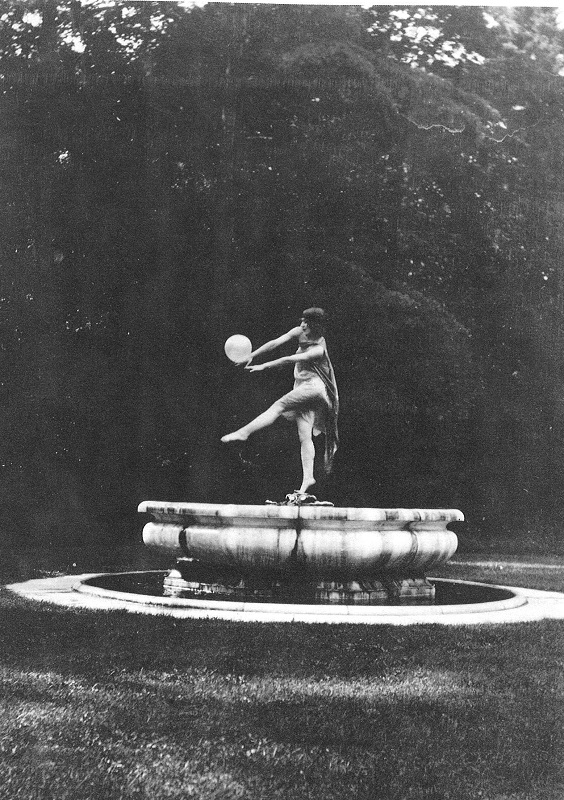
Desha Delteil performing The Bubble Dance. Photo from “Captured Motion: The Sculpture of Harriet Whitney Frishmuth
Any visitor to Crystal Bridges has admired The Bubble, the lovely bronze sculpture my Harriet Frishmuth that graces the Museum’s Late Nineteenth-Century Art Gallery. Frishmuth specialized in creating expressive sculptures of lithe young women, often artfully balanced on one foot, seemingly weightless and ready to leap.
Part of the grace and energy of The Bubble can be attributed to the model, Desha Delteil, who posed for Frishmuth 33 times between their first introduction in 1916 and 1930. Desha was a professional dancer who was known for the “Bubble Dance,” in which she performed with a ball or balloon. Desha was a member of the ballet company founded by Michel Fokine. Fokine’s choreography was revolutionary in the ballet world, with less emphasis on traditional, athletic movements and a greater focus on expressive motion and more fluid movement of the upper body. Before coming to the United States in 19xx Fokine choreographed for the Ballet Russe, creating the famous dance The Dying Swan for legendary ballerina Anna Pavlova—a work that would become a signature piece for her.

Desha Delteil performing The Bubble Dance. Photo from “Captured Motion: The Sculpture of Harriet Whitney Frishmuth, a Catalogue of Works” New York: Hohmann Holdings LLC, 2006.
Desha brought this new style of dance to her own choreography as well as to her modeling. Sometimes she would dance for Frishmuth until the artist glimpsed a movement or pose she wanted to capture in her work. Frishmuth enjoyed working with Desha because of the dancer’s willingness to hold these difficult, balanced poses. Frishmuth once said: “We started I don’t know how many times to make a quiet, still pose, and both of us got so bored that we couldn’t go on with it. So then we’d pull it down and start with something where she was standing on one leg.”
The Bubble was sculpted first as a small table-top work, just 19 inches tall, in 1921. Thirteen casts of this version were created, and Frishmuth commissioned Tiffany studios to craft iridescent glass balls to serve as the “bubble.” The larger sculpture was modeled in 1927 and cast in 1928, also with a Tiffany bubble, though the original Tiffany sphere has since been replaced.
The Bubble is an excellent example of the artistic skill of both the model and the artist. The more-than-life-sized bronze weighs nearly 600 pounds, and yet balances on an area of just four square inches.
Frishmuth and Delteil developed a very close friendship—the artist even hosted the model’s wedding reception in her studio. They remained close all their lives, and died just a year apart: Frishmuth in 1980 and Delteil in 1981. You can view another of Frishmuth’s sculptures, Roses of Yesterday, in the Early Twentieth-Century Art Gallery bridge. For more photographs of Desha, visit the George Eastman House’s Still Photo Archive. The catalog from which much of the information for this post was gleaned is available in the Crystal Bridges Library.




